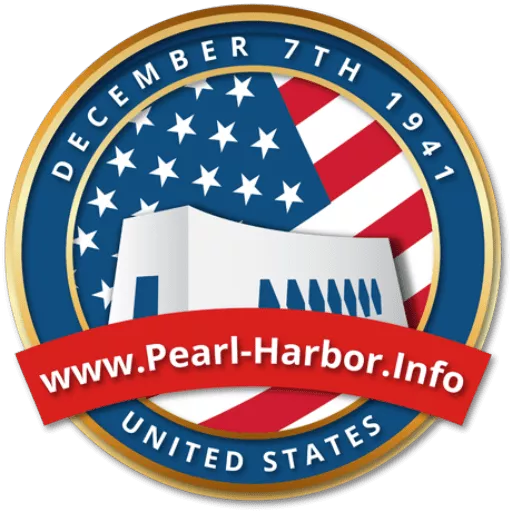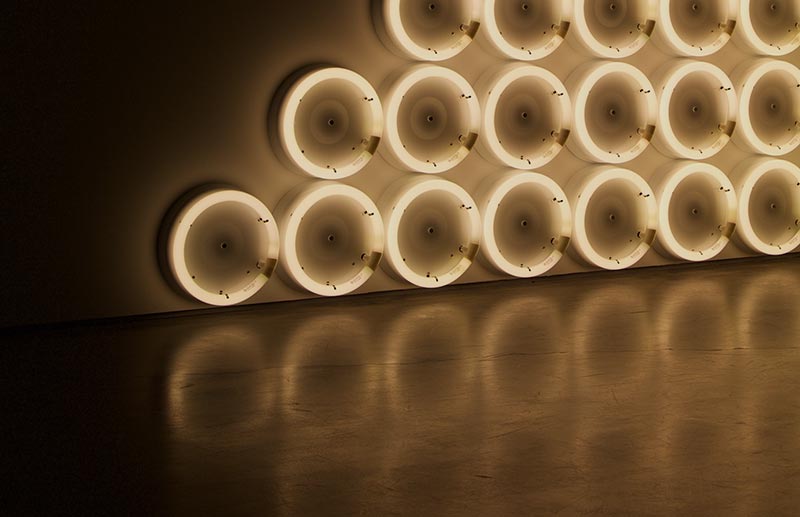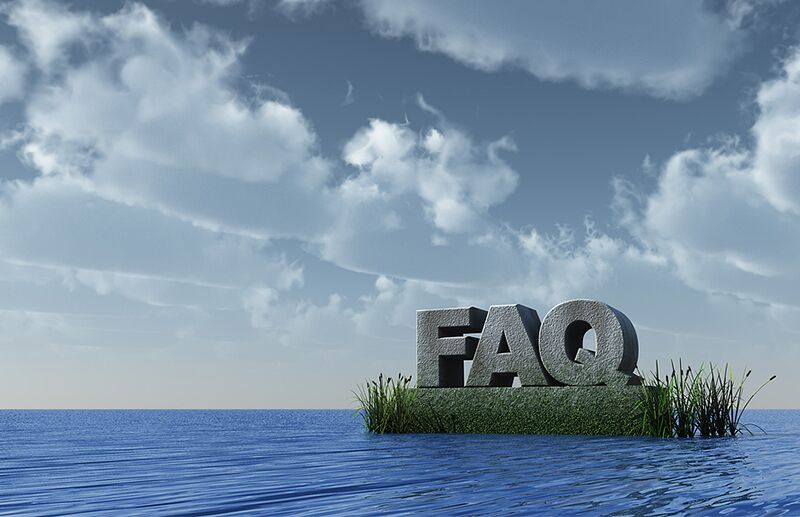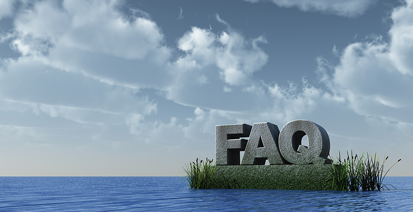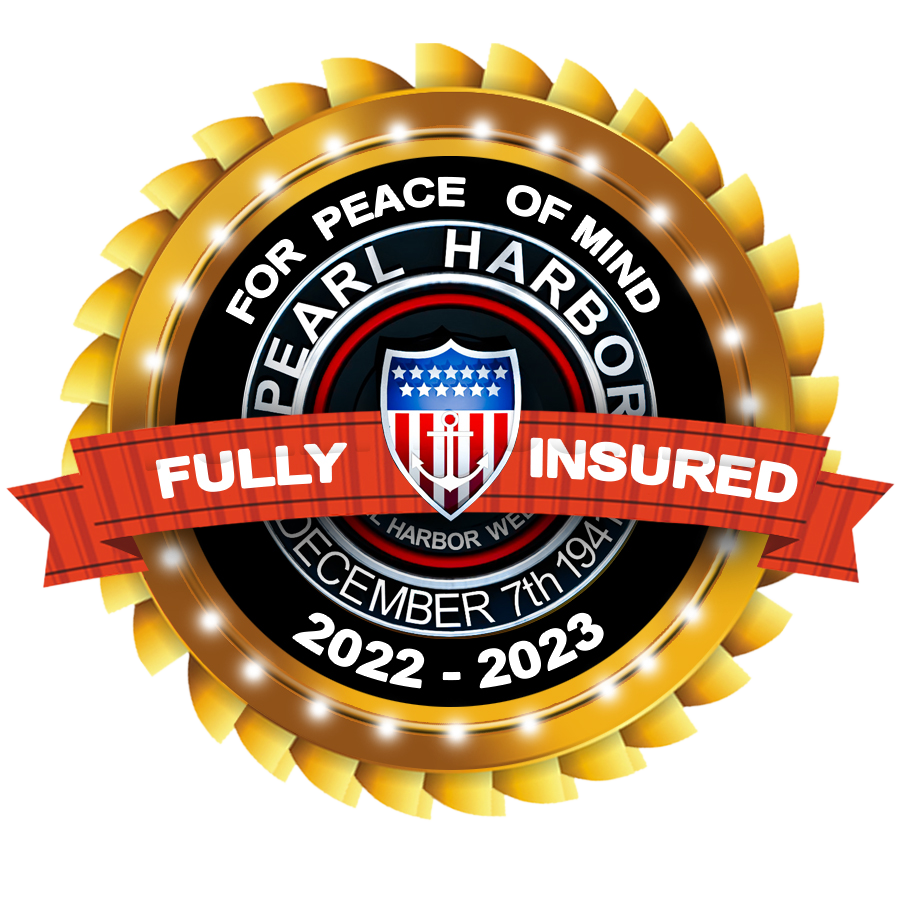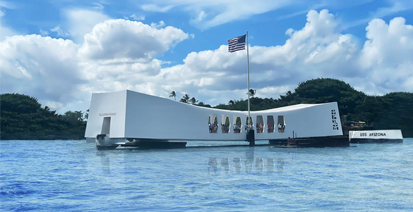Significant Events That Led To World War II

Armistice Day page from the New York Times, Charles Ransom MillerThe New York Times, CCPDM1.0
World War I ended approximately 20 years before the beginning of World War II; how could another worldwide military conflict occur again after just two decades of peace? WWII was not only confined just to Europe but expanded throughout Asia, the Pacific, Africa, Arabia, and the Mediterranean, making it the most destructive and deadest war the world had ever seen.
These are the events that lead to the bombing of Pearl Harbor and the start of the War in the Pacific during WWII.
Adolf Hitler becomes Chancellor of Germany.
As the Communist Party became more popular and influential, the government leaders and the public turned to the National Socialist Party to counter the communist from taking control of Germany. On Jan 19, 1933, the top German government officials appointed Hitler as Chancellor, assuming he could be controlled and reasoned with.
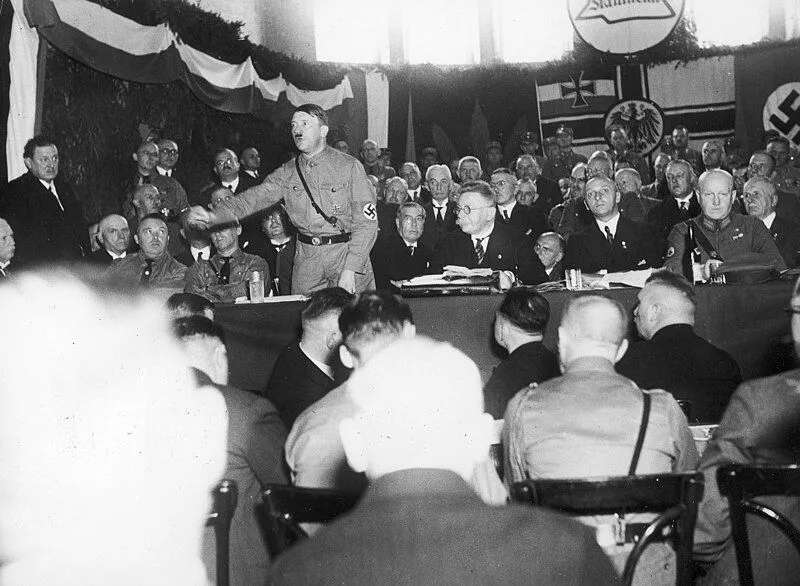
The Harzburg Front was a short-lived radical right-wing, anti-democratic political alliance in Weimar Germany, formed as an attempt to present a unified opposition to the government of Chancellor Heinrich Brüning. It was a coalition of the national conservative German National People's Party (DNVP) under millionaire press-baron Alfred Hugenberg with Adolf Hitler's National Socialist German Workers' Party (NSDAP), the leadership of Der Stahlhelm paramilitary veterans' association, the Agricultural League (Reichs-Landbund) and the Pan-German League (Alldeutscher Verband) organizations. The Front formed on Sunday, 11 October 1931 at a convention of representatives of the varying political groupings styling themselves the "national opposition" at the spa town of Bad Harzburg in the Free State of Brunswick, where the NSDAP's Dietrich Klagges had just been elected State Minister of the Interior. Negotiations between the NSDAP, the DNVP and Stahlhelm over a shared presidential candidate broke down in February 1932., The New York Times G.m.b.H. Bild-Denst Wide World Photos Berlin SW 68 Kochstr. 28/29, https://www.szukajwarchiwach.gov.pl/en/jednostka/-/jednostka/9395059/obiekty/560947, (CC BY-SA 4.0)
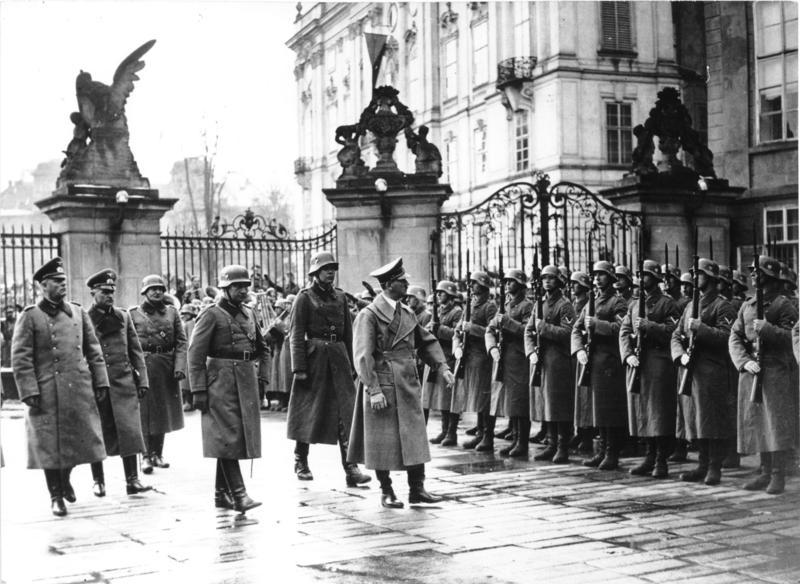
Adolf Hitler at Prague Castle , Unknown,https://en.wikipedia.org/wiki/en:German_Federal_Archives, Bundesarchiv, Bild 183-2004-1202-505 / CC-BY-SA 3.0DE
Hitler became the Fuhrer on August 18, 1934
When President Hindenburg died, Hitler took the reign of power and combined the President and Chancellor’s positions into one, thus becoming the absolute ruler of Germany with the new title of Fuhrer. At this time of his career, he had a public approval rating of 90 percent.
President Roosevelt signs Neutrality Act.
In 1935, President Franklin D Roosevelt signed a Neutrality Act to assure the public that America would not get involved in another European conflict. Unfortunately, Hitler saw this as a green light and took this into his consideration in his military desire to attack Germany’s bordering nations.
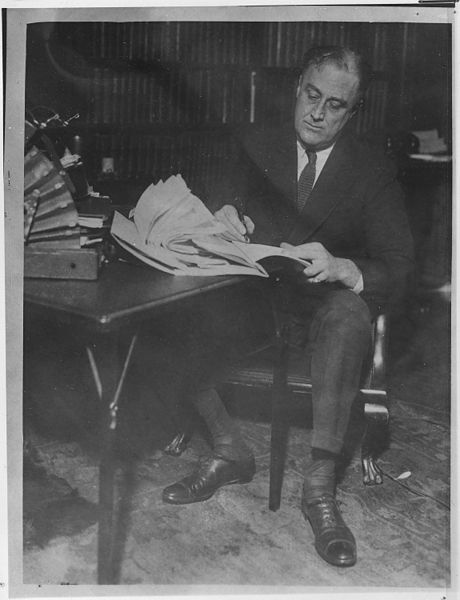
Franklin D. Roosevelt, Unknown author or not provided, U.S. National Archives and Records Administration, CCPDM1.0
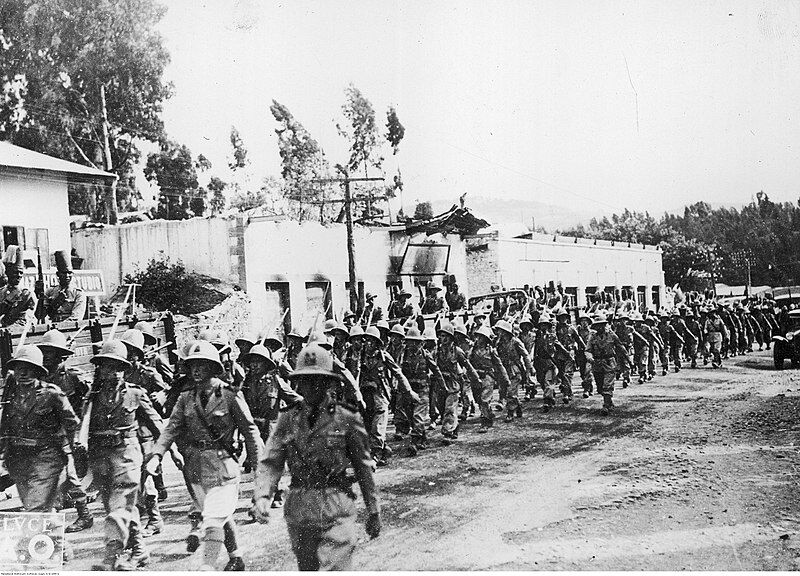
Military Parade of Italian Troops in Addis Ababa (1936), Unknown author, www.audiovis.nac.gov.pl, CCPDM1.0
Italy Invades Ethiopia
On Oct 3, 1935, Benito Mussolini sent his Italian troops to invade Ethiopia in Africa, ignoring the United Nations’ demands. This demonstrated to the world that the League of Nations was not an organization with any military force that could even stop a small nation from invading another.
Hitler Takes Back the Rhineland
On March 7, 1936, Hitler took over the Rhineland, which, after WWI, was designated a demilitarized zone by the Allies. This was a direct violation of the treaty, and the League of Nations, France, and the United Kingdom did nothing to stop Hitler from making the Rhineland part of Germany again.
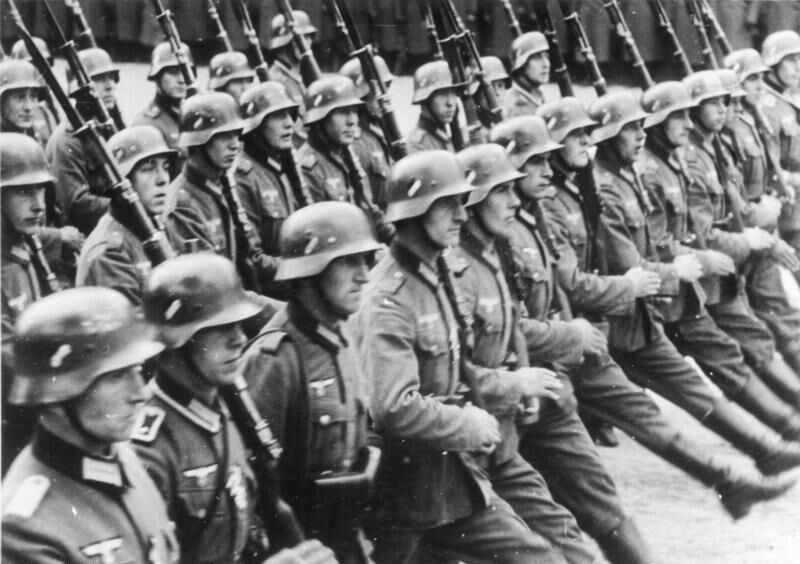
Warschau, Parade vor Adolf Hitler, Mensing, German Federal Archive, Creative Commons Attribution-Share Alike 3.0 Germany
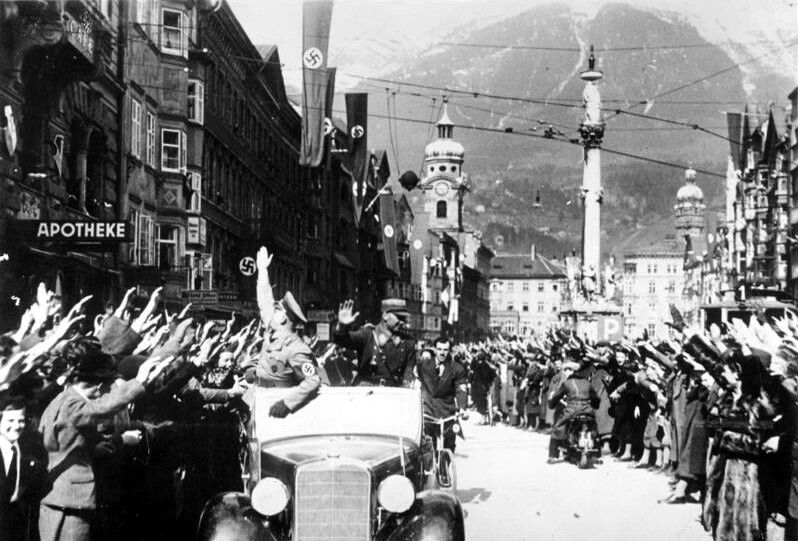
Anschluss Österreich, Innsbruck, Unknown, German Federal Archive, Creative Commons Attribution-Share Alike 3.0 Germany
Germany’s Conquest of Austria
On Oct 1, 1938, Hitler seized bordering Austria and made it part of Germany. Hitler’s march into Austria was met with welcome parades and only reinforced Hitler’s desire to conquer more of Germany’s neighboring countries.
Hitler Attacks Czechoslovakia
Hitler’s thirst for more territory continued, and on March 15, 1939, German troops invaded Czechoslovakia, breaking another written treaty with the United Kingdom.
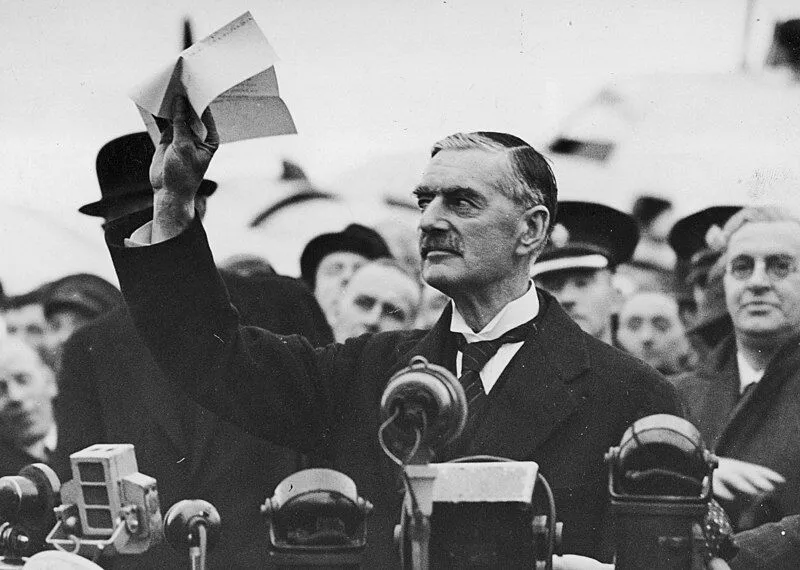
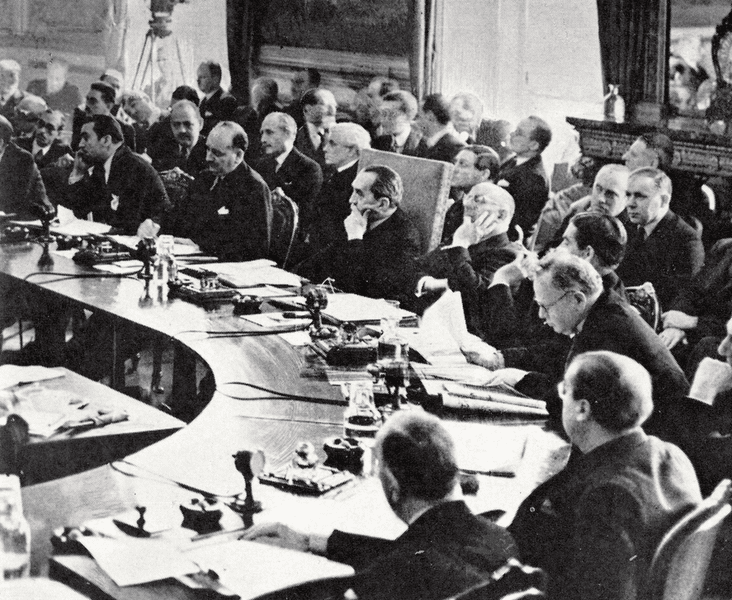
Bruce presiding over the League of Nations Council, Commonwealth of Australia, Scanned by uploader from the Bruce Collection, National Archives of Australia, CCPDM1.0
The League of Nations Proves to be Powerless
Germany and Japan soon realized that the League of Nations had no real power. They could not enforce treaties or organize a military force to stop larger countries from invading weaker nations.
Germany and Russia sign a Non-Aggression Treaty.
Hitler and Stalin created a non-aggression pact on August 14, 1939. Hitler wanted Poland and needed this agreement so Russia and England wouldn’t become allies against Germany.
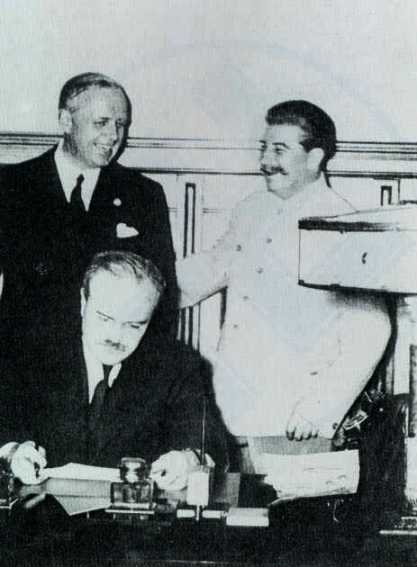
Ribbentrop-Molotov paktum, Unknown author, http://www.infoukes.com/history/ww2/page-03.html, CCPDM1.0
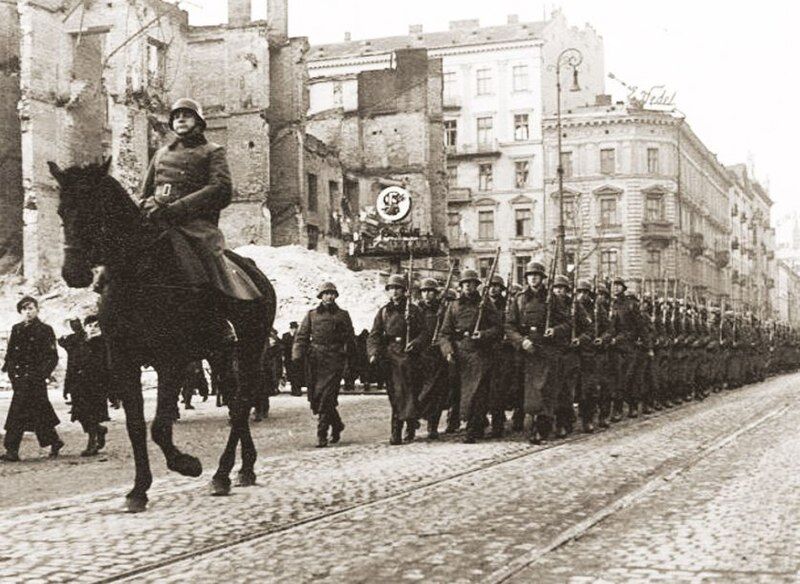
Wkroczenie Wehrmachtu do Warszawy 1.10.1939,unknown-anonymous, Miasto Nieujarzmione" Warszawa 1957, CCPDM1.0
Hitler Invades Poland
On Sept 1, 1939, Germany overwhelmed Poland’s defenses. England and France declared war on Germany, but Poland fell within weeks of being invaded.
Essential Events That Lead to WWII’s War in the Pacific
Japan was a valuable ally of the Allied Forces during WWI, receiving Saipan and Tinian from Germany at the war’s end. In the 1920s, its industries desperately needed abundant natural resources to sustain their growth and desire for wealth. With the beginning of the Great Depression, the country moved to a fascist style of government, and its military exerted growing influence over government policies, politicians, and their Emperor.
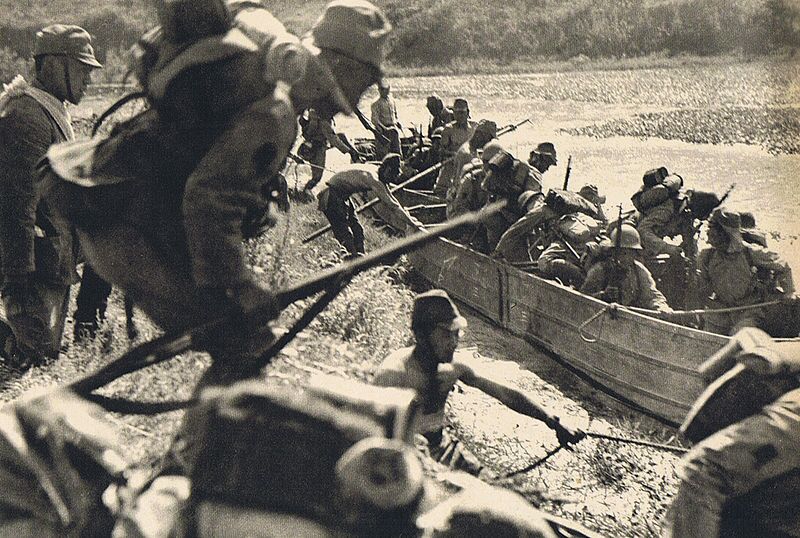
IJA Ikeda Detachment June 1940, Unknown author, シリーズ1億人の昭和史 『日本の戦史4』 (毎日新聞社 昭和54年発行) 42頁, CCPDM1.0

MHI Nagoya engine factory in 1938, 三菱重工業株式会社社史編さん委員会編, 三菱重工業(株)『海に陸にそして宇宙へ : 続三菱重工業社史 1964-1989』(1990.04), CCPDM1.0
The military focused on producing arms and weapons to keep Japan’s economy growing, with much of the raw material coming from the United States. Rather than continue this dependence on any foreign country, the military sought resource-rich nations to expand its empire beyond its past conquests of Korea and Formosa.
Japan Invades Manchuria
On Sept 18, 1931, Japan staged an incident at the Japanese-owned South Manchuria Railway Company in which they blamed the Chinese garrison for blowing up the railway. Soon after this incident, Japan sent a massive army into Manchuria.
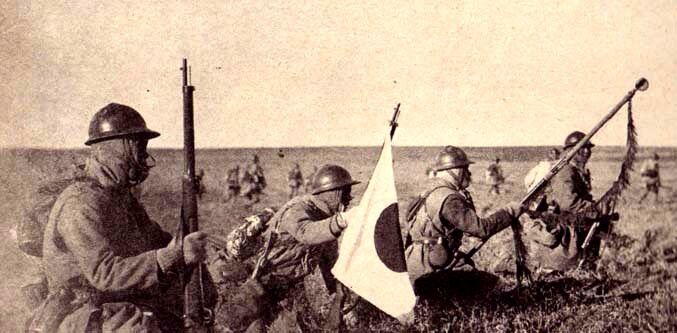
IJA Infantry in Manchuria, Tokyo Nichinichi Shimbun, World War II database, CCPDM1.0
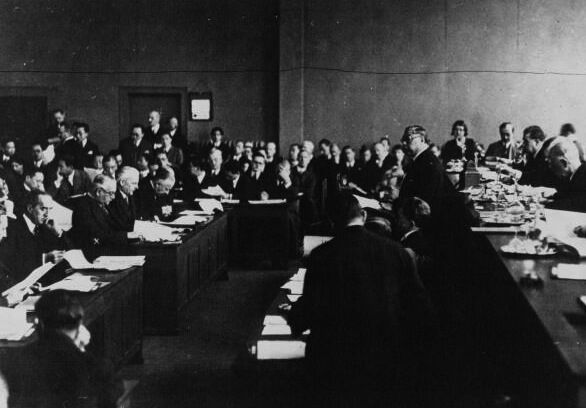
League of Nations Session Manchurian Crisis 1932, Robert Sennecke, Bibliothèque nationale de France, CCPDM1.0
League of Nations Responds to the Invasion
The League of Nations condemned Japan for invading Manchuria but could not force Japan out. A few months later, Japan formed a new country called Manchukuo and placed the last Emperor of China, Puyi as its puppet leader. Next, Japan invaded the adjacent province of Jehol and added it to Manchukuo.
The Assassination of Japanese Prime Minister Tsuyoshi
The Imperial Japan Navy assassinated Prime Minister Inukai Tsuyoshi due to his efforts to try and curb military power in Japanese politics. The country’s rule was given to Admiral Makato, ending the civilian government in Japan.
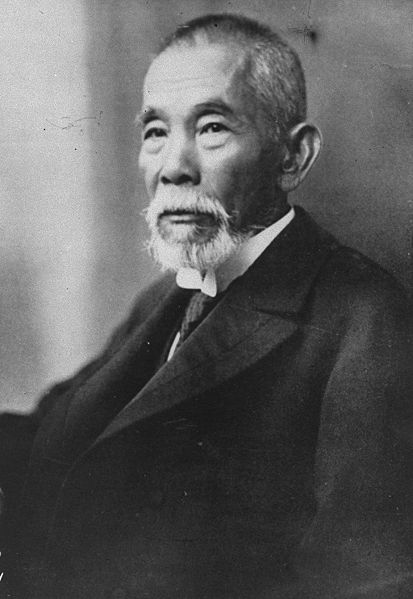
Tsuyoshi Inukai facing left, Unknown author, Japanese book Rekidai Shusho tou Shashin (歴代首相等写真), CCPDM1.0
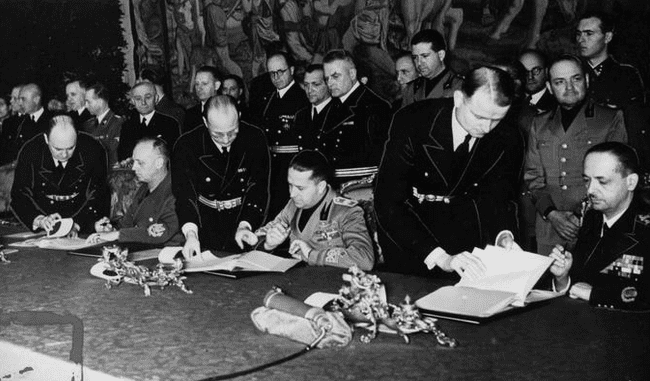
Csáky Tripartite pact 1940, Csáky Tripartite pact 1940, http://www.audiovis.nac.gov.pl/obraz/28220/629bb74e27cbd747fd2c8fae12bea9f6/, CCPDM1.0
Japan Becomes a Member of the Axis Coalition
On Nov 25, 1936, Japan, Germany, and Italy signed a treaty, forming the Axis Powers.
Japan Declares War on China
On July 7, 1937, Japan invaded China and soon occupied Shanghai, Nanking, and the southern Shanxi province. The Chinese government and Communist Party came to an uneasy truce, so they stopped fighting and concentrated on fighting the Japanese invasion. By 1940, the war had become a stalemate, in which the Japanese controlled most of the coastline, and the Chinese fighters controlled the interior of the country,
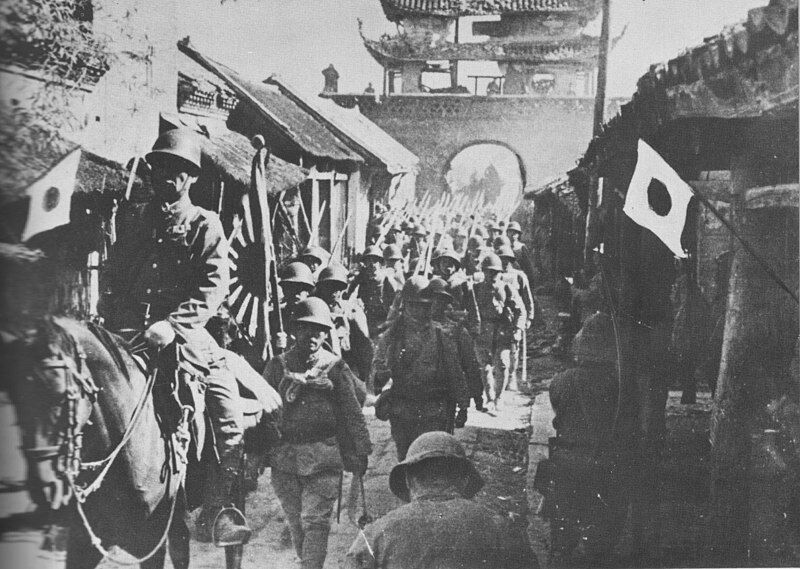
Japanese troops occupying a Chinese town in Anhwei province, 1938., U.S. Information Agency, Scanned from 9781568496047, photograph marked as taken by U.S. Information Agency, PD-USGov
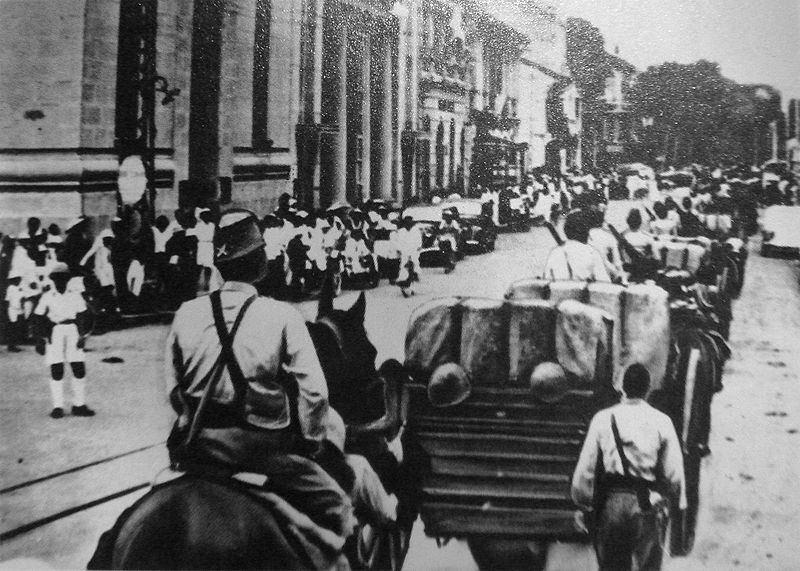
Japanese troops entering Saigon in 1941, Japanese Army, "Chronique de la Seconde Guerre Mondiale", CCPDM1.0
Japan takes control of French Indonesia.
With the German conquest of France, the Japanese saw an opportunity to take over French Indonesia (now known as Vietnam). On Set 22, 1940, Japan occupied French Indonesia and added it to the empire.
The United States Helps China In its War against Japan
During the summer and fall of 1941, the United States supplied advanced fighter planes to a volunteer force of US pilots called the “Flying Tigers.” Defending the skies of China, they shot down over 300 Japanese aircraft while losing only 12.
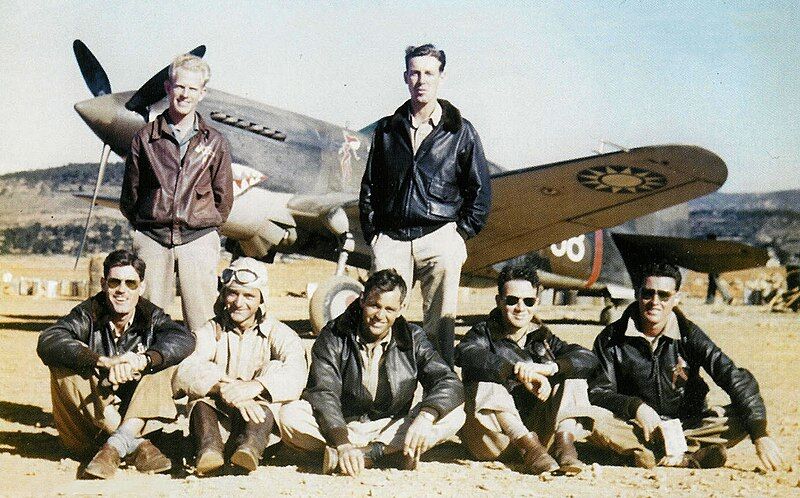
First American Volunteer Group Soldiers at Yunnanyi Airport, Tom Haywood (AFSPC 14th Air Force Soldier), 美国飞虎队的祥云记忆(三):一组罕见的彩色老照片, CCPDM1.0
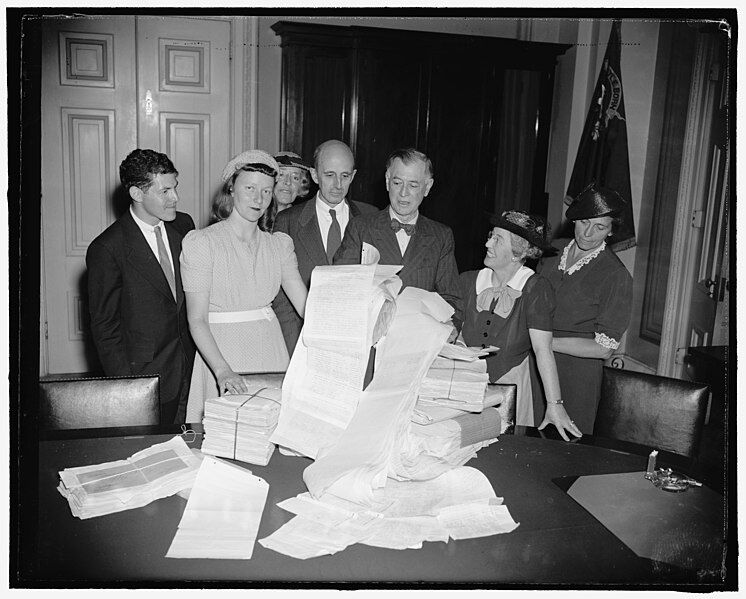
Senator Pittman gets petition urging embargos against Japan. Washington, D.C., July 18. A delegation representing the American Committee for non-participation in Japanese agression, headed by Eleanor Fabyan of Boston, called on Senator Key Pittman, Chairman of the Senate Foreign Relations Committee, this afternoon to present petitions urging embargoes against Japan. Miss Fabyan said the petitions were signed by 300,000 persons. Left to right: Gabriel Lasker, Cambridge; Gertrude Ely, Phila., PA; Eleanor Fabyan, Boston, Mass.; Dr. Roger Greene; Senator Pittman; Mrs. George Fitch, Pasadena, Cal.; Mrs. Joseph Exter, Chicago, Ill.; Dr. Greene is Chairman of the organization, 7/18/39 Abstract/medium: 1 negative : glass ; 4 x 5 in. or smaller, Harris & Ewing, photographer, Library of Congress, Catalog: https://lccn.loc.gov/2016875971, Image download:, https://cdn.loc.gov/service/pnp/hec/27000/27015v.jpg, Original url: https://www.loc.gov/pictures/item/2016875971/, PD-US-no notice
Oil and Steel Embargo Against Japan
In August of 1941, the US, Britain, and Netherlands East Indies instituted an oil and steel embargo on Japan unless they left China. However, Japan’s military leaders had no intentions of giving up the territory they conquered in China.
Japan relied on 80 percent of its oil from the US and needed steel to continue its weapon and fleet expansion. They knew if they invaded Netherlands East Indie, it would trigger a war with the US. Thus, the Imperial Japan Navy began planning a secret attack on Pearl Harbor.
War in the Pacific Begins
With the bombing of Pearl Harbor on Dec 7, 1941, President Franklin D Roosevelt read a declaration of war against Japan on Dec 8th to Congress and its citizens across the US. A few days later, Hitler declared war on the United States, and now the US was facing battles in the Atlantic, Europe, Mediterranean Ocean, Africa, Pacific, and Asia.
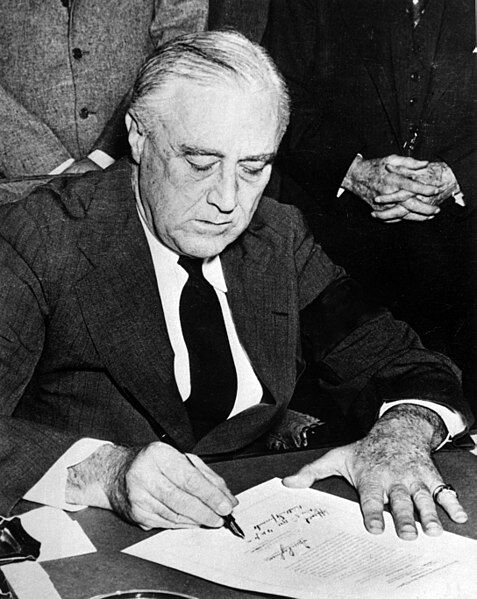
United States President Franklin D. Roosevelt signing the declaration of war against Japan, in the wake of the attack on Pearl Harbor., Abbie Rowe (1905–1967), National Archives and Records Administration, PD-USGov
